

The M06 motorcycle was a successor to the SHL M04, first developed in 1952 after production of the M04 moved to the Warsaw Motorcycle Factory (Warszawską Fabrykę Motocykli - WFM) in 1951. From 1955, the M06 was also produced by the Communication Equipment Factory in Swidnik (Wytwórni Sprzętu Komunikacyjnego w Świdniku, or WSK). Both factories further developed the model until the middle 1960s, when WFM ceased production.
The M06 B3 model was introduced by WSK in 1971, and continued in production in several variants until 1985. In 1974 and 1975 three named models were introduced - "Gil", "Bąk" and "Lelek". Gil took a conventional form, Bąk was intended as a "chopper" with high handlebars and a seat with a high backrest, and Lelek had the feel of an off-road bike. Production of Bąk and Lelek lasted only two years, but Gil lasted until 1980.
The kit is an A4 stapled booklet, and contains 7 pages of model parts, 6 on thin card and 1 on paper for laminating on thicker card. There are also 4 pages of instructions in Polish and 5 pages of diagrams. There are three full-size views of the assembled model - a right side view of the complete model, a left side view with the fule tank, seat and left side cover removed, and a top view with the seat and both side covers removed. The front cover has a colour painting of the prototype, and there is a single black and white photograph of a finished model.
The scale is given as 1:9 so I reprinted the sheets at 64% to give me 1:14. A number of parts are meant to be produced from bent "wire" up to 3mm in diameter. I replaced these with rolled paper tubes or cutout card strips, but otherwise built the model as supplied. The instructions I scanned, passed through an OCR reader, and presented the result to Google Translate to achieve something approximating to English.
Even allowing for translation problems, there are numerous discrepancies between the instructions, the assembly diagrams and the parts themselves. Most significantly, the instructions and diagram for the carburettor describe an assembly with far more parts than are provided, though the simpler version is perfectly adequate. It is a bit of a challenge to work out which parts go where, though. This is also the case where parts are mislabelled on the sheets or in the diagrams, notably for the frame.
The model itself is a strange mixture of very accurate and distinctly approximate. Most sections fit together well, but there is a substantial minority of parts which just do not. For example, the crankcase is made up of several layers of thick card, faced with printed parts. The templates for cutting the card are all significantly smaller than the facings. There are also several parts which are printed as the mirror image of what they should be. I suspect that the clue to this is in the photograph of the model made by the designer. This is built in the style where the paper model simply provides the basic shapes, which are filled and smoothed, and then painted. Precision fit and the printed details are not too important in this type of build. My choice is to use the original printed paper as much as possible, so I had to make quite a few adjustments to make this work.
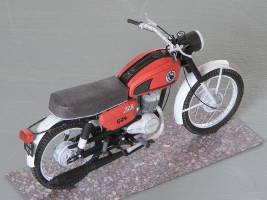
|
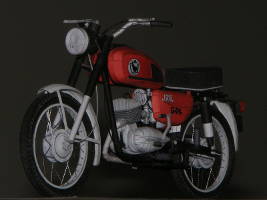
|
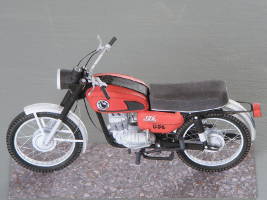
|
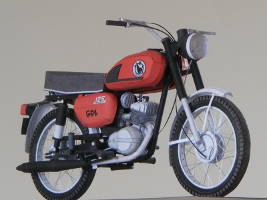
|
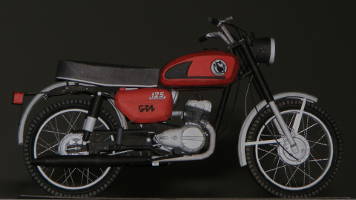
|
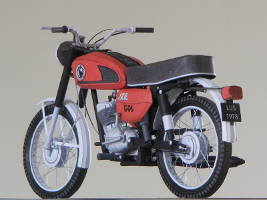
|